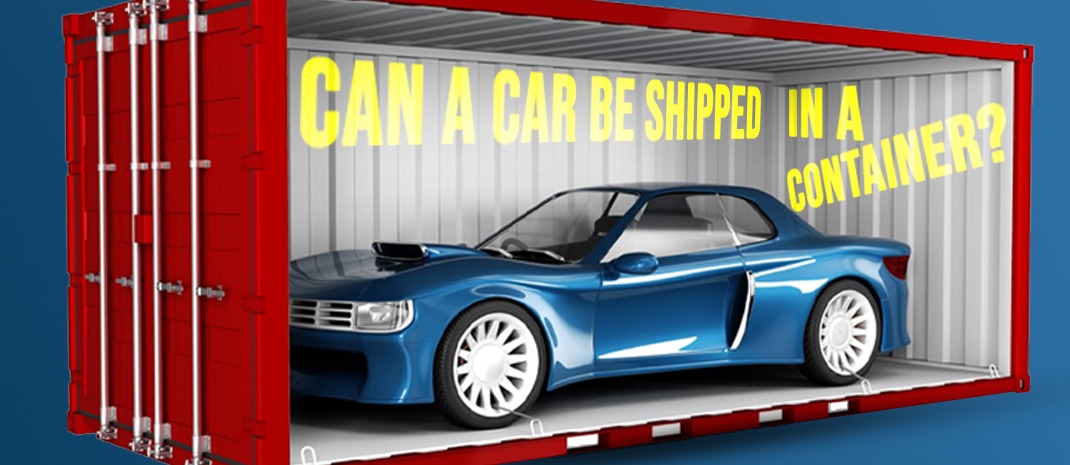In today’s globalized world, shipping cars across continents has become common, whether for business purposes, personal relocations, or even for enthusiasts looking to purchase rare models from overseas.
Among the various methods of transporting vehicles internationally, auto moving services and container shipping have emerged as popular and reliable choices.
This blog delves into the details of whether a car can be shipped in a container, the processes involved, the benefits, potential challenges, and what one needs to know to ensure a smooth shipping experience.
Can a Car Be Shipped in a Container?
The Simple Answer: Yes
Yes, a car can be shipped in a container. In fact, it is one of the safest and most secure methods of transporting a vehicle over long distances, especially internationally. Container shipping provides protection from the elements, theft, and damage, making it a preferred choice for high-value or vintage cars.
Understanding Container Shipping
What is Container Shipping?
Container shipping involves placing the car inside a large metal container that is loaded onto a cargo ship. These containers are typically standardized, with the most common sizes being 20 feet and 40 feet long. The car is securely fastened within the container to prevent movement during transit.
Types of Containers
- 20-Foot Container: Suitable for shipping one car, this container measures approximately 20 feet long. Compared to open transport car shipping, container shipping provides an enclosed environment for better protection.
- 40-Foot Container: This can accommodate two cars or one car and additional household goods. It measures around 40 feet long, 8 feet wide, and 8 feet high.
- High Cube Container: A variant of the standard containers, this one is slightly taller, providing extra vertical space, which can be beneficial for larger vehicles or when extra cargo is being shipped alongside the car.
The Shipping Process
1. Preparation
Before shipping, the car must be prepared. This involves several steps:
- Cleaning: Thoroughly clean the car inside and out to make the inspection process easier and to prevent any dirt or debris from causing damage.
- Inspection: Document the car’s condition with photographs and notes, including any existing damage. This is crucial for insurance claims if any damage occurs during transit.
- Mechanical Check: Ensure the car is in good working order. Check for any leaks and top off all fluids. It’s also advisable to reduce the fuel level to about a quarter tank to comply with shipping regulations.
- Documentation: Prepare all necessary paperwork, including the bill of sale, registration, title, and any export/import documents required by the destination country.
2. Loading
Loading the car into the container is a critical step that must be done with care:
- Securing the Car: The car is driven or winched into the container and positioned correctly. It is then secured using straps, blocks, or wheel chocks to prevent movement. Professional shipping companies use specialized equipment to ensure the car is immobilized during transit.
- Extra Padding: For added protection, especially for high-value or vintage cars, extra padding or covers can be used to shield the vehicle from potential scratches or dents.
3. Sealing the Container
Once the car is securely loaded, the container is sealed. This seal is recorded and tracked throughout the shipping process to ensure the container is not tampered with.
4. Transport and Delivery
The sealed container is transported to the port, loaded onto the cargo ship, and shipped to the destination. Upon arrival, the container goes through customs clearance before being transported to its final destination or the recipient if it is a door to door auto transport service, where it is opened, and the car is carefully unloaded.
Benefits of Shipping a Car in a Container
1. Protection and Security
Container shipping is one of the most popular services offered by a classic car shipping company. It offers unmatched protection against weather elements, road debris, and potential theft. The enclosed environment ensures the car remains in the same condition as when it was loaded.
2. Convenience
For individuals relocating internationally, container shipping allows for consolidating personal belongings and the car in one shipment. This can simplify logistics and reduce costs.
3. Versatility
Containers can be used to ship a wide range of vehicles, from compact cars to larger SUVs and even motorcycles. This method can be conveniently used by a boat transportation company. The ability to include additional cargo makes it a versatile option.
4. Customization
Shippers can choose between shared containers (where multiple vehicles share space in one container) or dedicated containers (solely for one vehicle and additional cargo). This flexibility can help tailor the shipping process to specific needs and budgets.
Challenges and Considerations
If you are looking to ship a car across the country, then you may face the following challenges:
1. Cost
Container shipping can be more expensive than other methods, such as roll-on/roll-off (RoRo) shipping. However, the added protection and convenience often justify the higher cost, especially for high-value vehicles.
2. Space Limitations
While 20-foot and 40-foot containers can accommodate most vehicles, extremely large or heavy vehicles might pose a challenge. In such cases, alternative shipping methods might be necessary.
3. Customs and Regulations
Navigating the customs process can be complex, with different countries having varying regulations and documentation requirements. Working with a reputable shipping company that understands these regulations is essential to avoid delays and complications.
4. Loading and Unloading
Improper loading and unloading can result in damage to the vehicle. It’s crucial to use professional services with experience handling vehicle shipments to minimize risks.
Tips for a Smooth Shipping Experience
1. Choose a Reputable Shipping Company
Selecting a company with a proven track record in vehicle shipping is vital. Look for reviews, certifications, and memberships in professional organizations.
2. Understand the Costs
Get detailed quotes that include all potential charges, such as customs fees, insurance, and delivery to the final destination. Be wary of quotes that seem too good to be true, as they might have hidden costs.
3. Insurance
Ensure the shipping company provides adequate insurance coverage for the vehicle. Additional insurance might be necessary for high-value or rare cars.
4. Plan Ahead
Shipping a car internationally is not a last-minute task. Start the process well in advance to handle all necessary preparations, documentation, and potential delays.
Conclusion
Shipping a car in a container is a viable and often preferable option for transporting vehicles internationally. The method provides unparalleled protection and security, making it ideal for high-value or vintage cars. It also offers the convenience of including additional cargo. While the process involves certain costs and requires careful planning, the benefits outweigh the challenges.
For anyone considering this method, working with a reputable shipping company and understanding the full scope of the process will ensure a smooth and successful experience. Whether relocating, purchasing a car from overseas, or simply shipping a vehicle for any other reason, container shipping remains a top choice for many.
FAQs
Q1: Is it possible to ship a car in a container?
A1: Yes, shipping a car in a container is possible and is a preferred method for long-distance and international transport due to its safety and security.
Q2: What are the benefits of shipping a car in a container?
A2: Protection: Shields the car from weather elements, debris, and theft.
Security: Securely sealed and tracked containers.
Convenience: Allows for shipping personal belongings alongside the car.
Versatility: Suitable for various types of vehicles, including high-value and vintage cars.
Q3: What types of containers are used for car shipping?
A3: 20-Foot Container: Fits one car.
40-Foot Container: Fits two cars or one car plus additional cargo.
High Cube Container: Provides extra vertical space for larger vehicles or additional cargo.
Q4: Are there any size limitations for shipping a car in a container?
A4: Yes, standard containers (20-foot and 40-foot) have size limitations. Extremely large or heavy vehicles might require alternative shipping methods or specialized containers.
Q5: What documents are required for shipping a car in a container?
A5: Bill of sale
Vehicle registration
Title
Export/import documents
Insurance documentation
Photo documentation of the car’s condition before shipping




